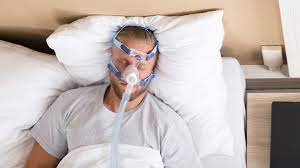Introduction:
Sleep apnea is a common sleep disorder that affects millions of people worldwide. It is characterized by interrupted breathing during sleep, leading to poor sleep quality and potential health risks. However, many individuals remain undiagnosed because they are unaware of the signs and symptoms of sleep apnea. In this article, we will explore how to recognize the potential indications of sleep apnea Lake Mary and when to seek professional medical assistance. So, let’s delve into the world of sleep apnea detection!
Understanding Sleep Apnea
Before we dive into the signs of sleep apnea, let’s briefly understand what sleep apnea is. Sleep apnea is a condition in which the airway becomes partially or completely blocked during sleep, resulting in breathing pauses or shallow breathing. These pauses can last for a few seconds to a minute and can occur multiple times throughout the night. The two most common types of sleep apnea are obstructive sleep apnea (OSA) and central sleep apnea (CSA).
- Obstructive sleep apnea (OSA): This is the more prevalent form of sleep apnea and occurs when the throat muscles relax and block the airway.
- Central sleep apnea (CSA): This less common type occurs when the brain fails to send proper signals to the muscles that control breathing.
Signs and Symptoms of Sleep Apnea
- Loud and Chronic Snoring: One of the most noticeable signs of sleep apnea is loud and persistent snoring. The snoring is often interrupted by pauses or choking sounds as the person gasps for air.
- Excessive Daytime Sleepiness: People with sleep apnea often feel excessively tired or sleepy during the day, regardless of how much sleep they had the night before. This persistent fatigue can impact daily activities, work performance, and overall quality of life.
- Witnessed Pauses in Breathing: Sometimes, the person sharing a bed or room with someone who has sleep apnea may notice sudden pauses in their breathing during sleep. These pauses are often followed by loud snoring or choking sounds as the individual resumes breathing.
- Morning Headaches: Waking up with frequent headaches, especially in the morning, can be a sign of sleep apnea. The oxygen deprivation caused by interrupted breathing during the night can lead to headaches upon waking.
- Waking up with a Dry or Sore Throat: Sleep apnea can cause a dry or sore throat due to the mouth being open during sleep, leading to increased airflow and drying of the throat tissues.
- Restless Sleep and Insomnia: Sleep apnea can disrupt the normal sleep cycle, causing restless sleep and frequent awakenings throughout the night. Individuals may also experience difficulty falling asleep (insomnia) due to the discomfort associated with the condition.
- Mood and Cognitive Changes: Sleep deprivation caused by untreated sleep apnea can lead to mood swings, irritability, difficulty concentrating, and memory problems.
- Decreased Libido and Erectile Dysfunction: Sleep apnea can affect sexual function in both men and women. Men may experience erectile dysfunction, while women may experience a decrease in libido.
When to Seek Medical Assistance
If you or your partner experience any of the aforementioned signs and symptoms of sleep apnea, it is important to consult a healthcare professional for proper evaluation and diagnosis. Sleep apnea is a serious condition that can have long-term effects on your health if left untreated.
A healthcare provider, such as a sleep specialist or a dentist specializing in sleep disorders, can conduct a comprehensive evaluation. This may involve a sleep study, where your breathing patterns, oxygen levels, brain activity, and other vital signs are monitored during a night’s sleep. The results of the sleep study will help determine if you have sleep apnea and the appropriate treatment options.
Treatment Options for Sleep Apnea
The sleep apnea treatment Lake Mary depends on the severity of the condition and the underlying cause. Common treatment options include:
- Continuous Positive Airway Pressure (CPAP): CPAP therapy involves wearing a mask over the nose or mouth during sleep. The mask is connected to a machine that delivers a constant flow of air pressure, keeping the airway open and preventing pauses in breathing.
- Oral Appliance Therapy: This treatment involves wearing a custom-made oral appliance, similar to a mouthguard or retainer, that helps keep the airway open by repositioning the jaw and tongue.
- Lifestyle Changes: Making certain lifestyle modifications can help alleviate sleep apnea symptoms. These include maintaining a healthy weight, avoiding alcohol and sedatives, sleeping on your side, and practicing good sleep hygiene.
- Surgical Intervention: In severe cases or when other treatments fail, surgical options may be considered. These can involve removing excess tissues from the throat, repositioning the jaw, or implanting devices to keep the airway open.
Conclusion
Sleep apnea is a common sleep disorder that can have significant impacts on your health and quality of life. Recognizing the signs and symptoms of sleep apnea is the first step towards seeking appropriate medical assistance. If you or your partner experience chronic snoring, daytime sleepiness, witnessed pauses in breathing, or other related symptoms, it is crucial to consult a healthcare professional.
With proper diagnosis and treatment, you can effectively manage sleep apnea, improve sleep quality, and enhance your overall well-being. Remember, a good night’s sleep is essential for a healthy and rejuvenated life. If you have experienced sleep apnea, see Dentist Lake Mary for
sleep apnea treatment. To learn more about sleep apnea or any other dental procedures in Lake Mary, call (407)333-1335 to schedule your appointment.

